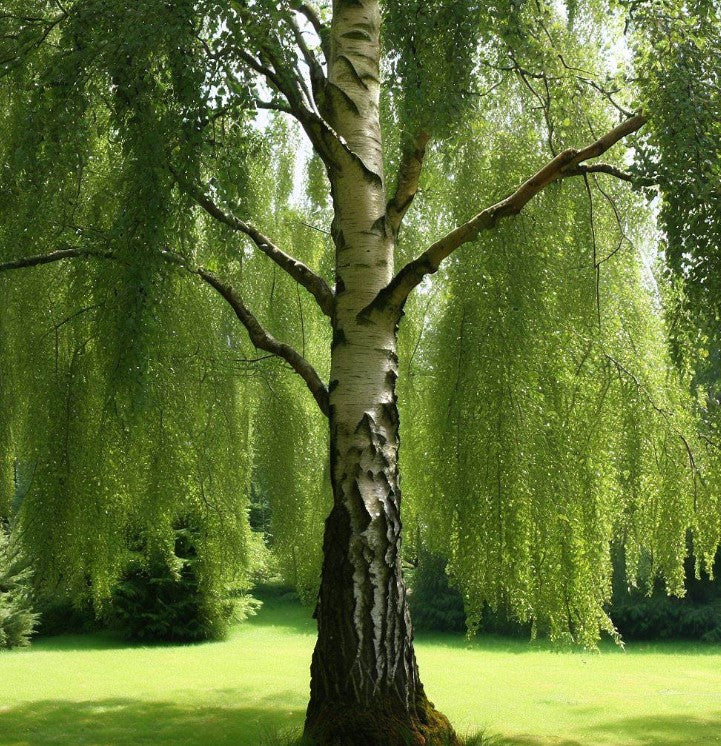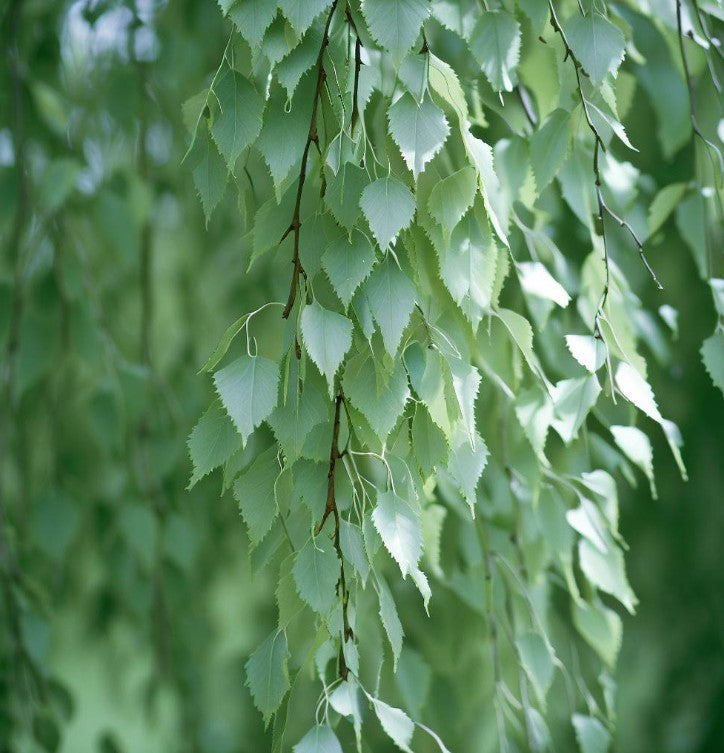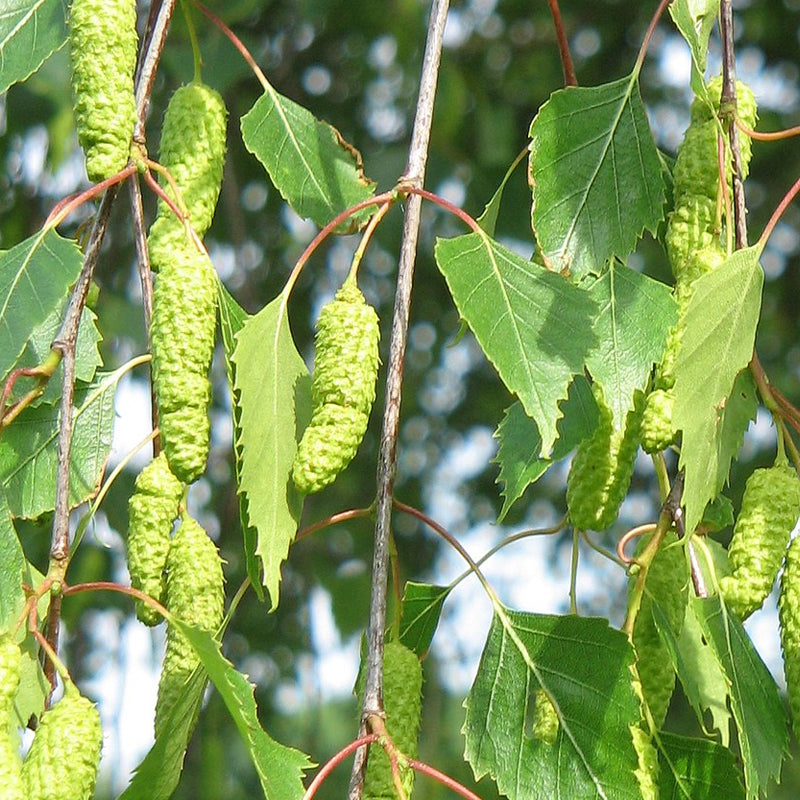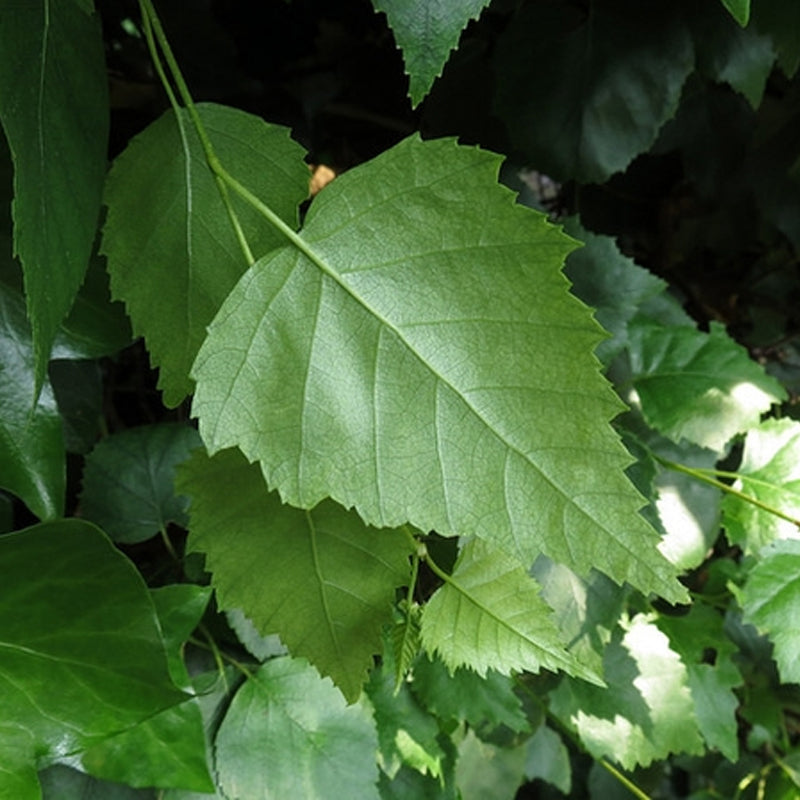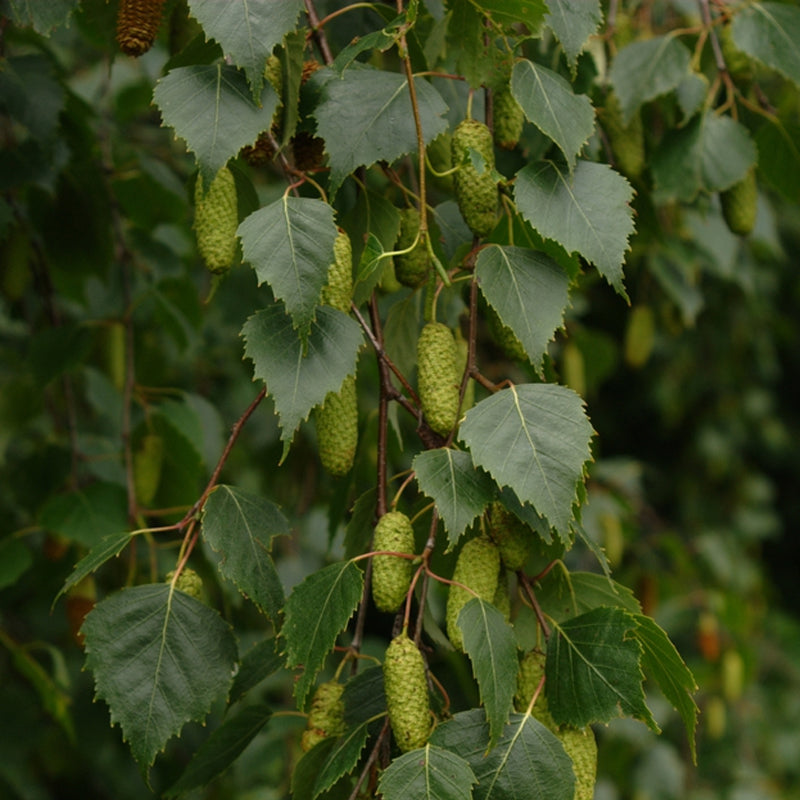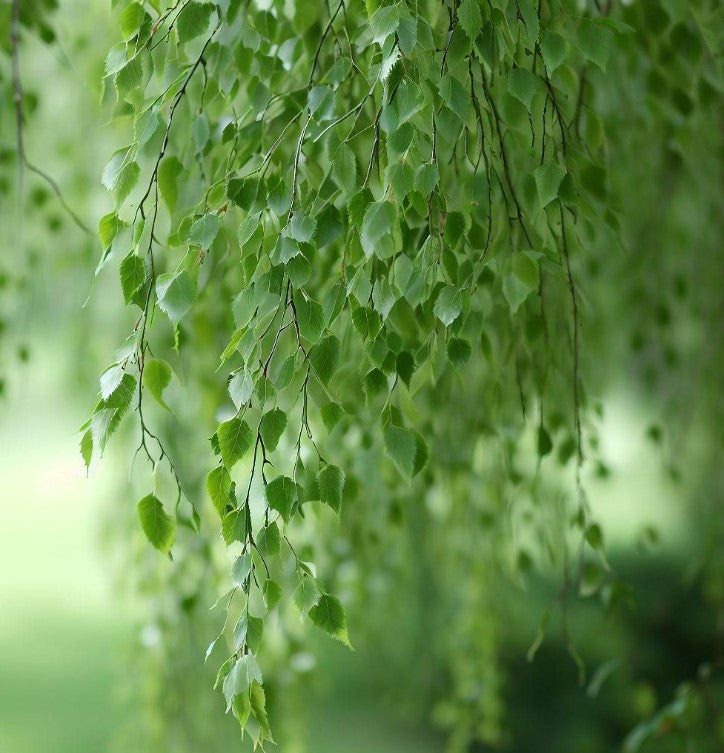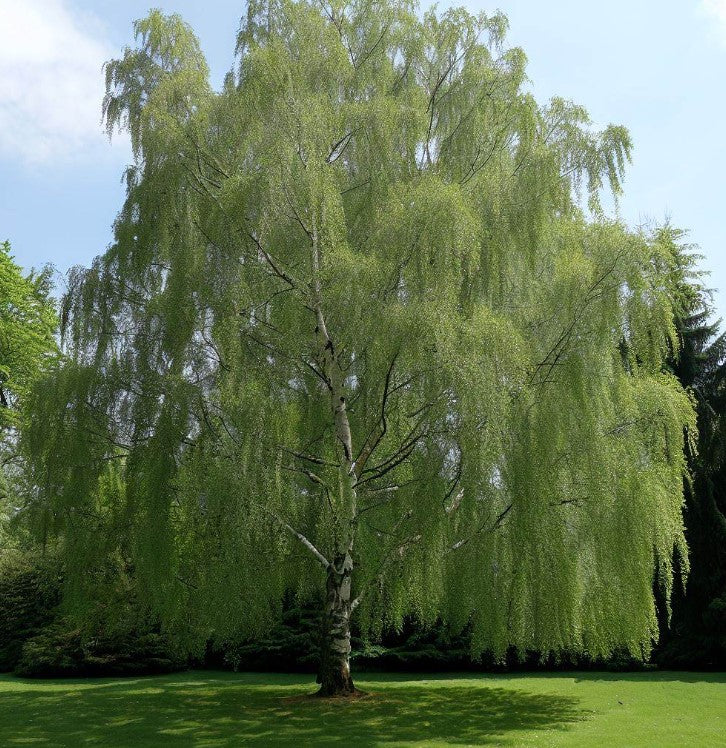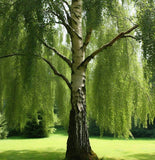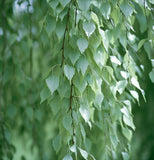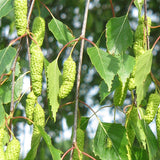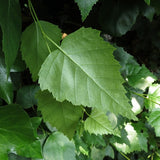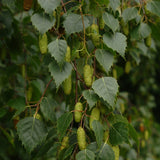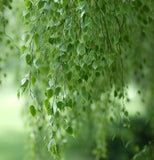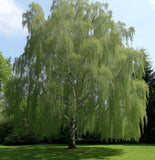Betula pendula (alba) s.g. (European White Birch)
Betula pendula (alba) s.g. (European White Birch) is a deciduous tree native to Europe and parts of Asia. It is a medium-sized tree that typically grows to a height of 30 to 60 feet (9 to 18 meters), occasionally reaching up to 80 feet (24 meters). It has a slender, upright growth habit with a pyramidal crown when young, which becomes more rounded with age. The bark is smooth and white, with dark horizontal fissures or markings.
Leaves: The leaves of the European White Birch are simple and alternate, measuring about 1.5 to 3 inches (4 to 8 centimeters) in length. They are triangular or diamond-shaped with serrated edges. The leaves are dark green on the upper surface and paler underneath, turning bright yellow in the fall.
Flowers: European White Birch trees are monoecious, meaning they have separate male and female flowers on the same tree. The flowers appear in early spring before the leaves. The male flowers are long, yellow-brown catkins that hang down from the branches, while the female flowers are smaller and appear as upright clusters.
Fruit: After pollination, the female flowers develop into small, winged nutlets that are arranged in cone-like structures called strobiles. These nutlets are dispersed by wind during late summer or fall.
Habitat and Range: European White Birch trees are widespread in Europe and can be found in various habitats, including woodlands, meadows, and riverbanks. They prefer well-drained soils and are often associated with acidic or neutral pH levels.
Ecological Importance: European White Birch trees provide habitat and food for various wildlife species. They support a diverse range of insects, including caterpillars that are important food sources for birds. The trees also have a symbiotic relationship with certain fungi, forming mycorrhizal associations that aid in nutrient uptake.
Landscape Use: European White Birch is commonly used in landscaping and as an ornamental tree. Its striking white bark and graceful, pendulous branches make it an attractive choice for gardens and parks. It can also be used to create a screen or windbreak due to its dense foliage.
Maintenance: European White Birch trees are relatively low-maintenance. They prefer moist soil but can tolerate moderate drought once established. Pruning is generally not necessary, but removal of dead or diseased branches can be done if needed.
Botanical Name : Betula pendula (alba) s.g.
Common Name : European White Birch
Height : 40 ft
Spread : 25 ft
Germination Info : Seed requires 30-60 days cold moist stratification
Hardiness zone : 3-7
Other Info : (Seeded grade) means we shatter the seed cones the we screen out a large percentage of the bracts. This is sold as a mix of seed and small cone bract pieces.
Average seed per ounce : Approx. 43,750

